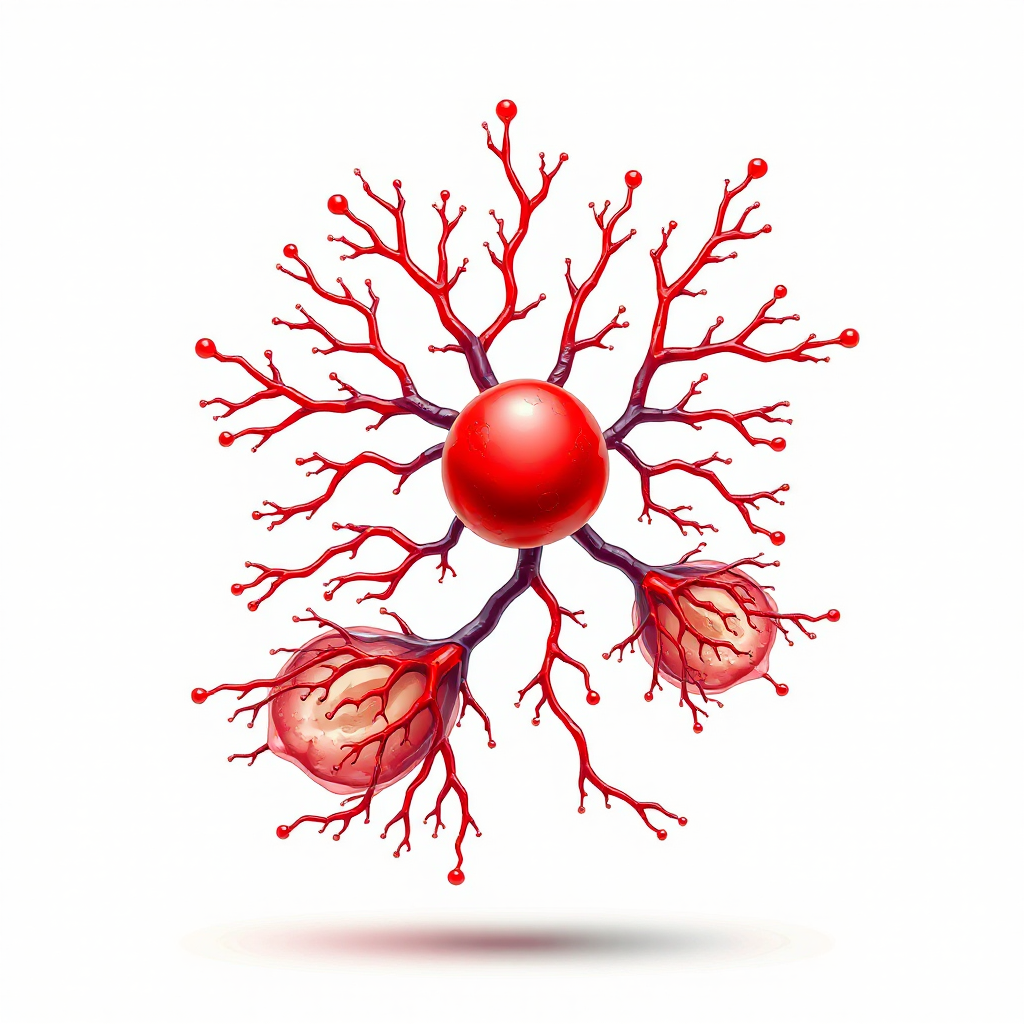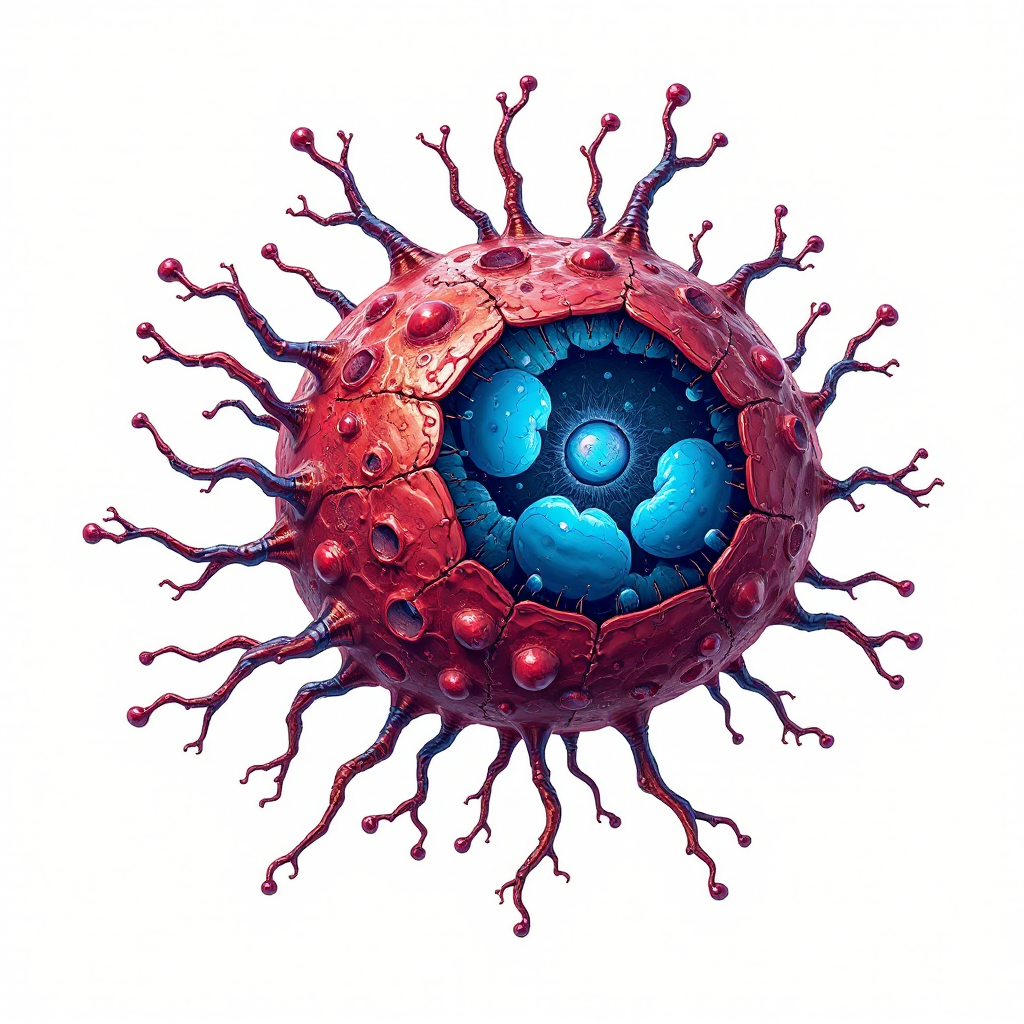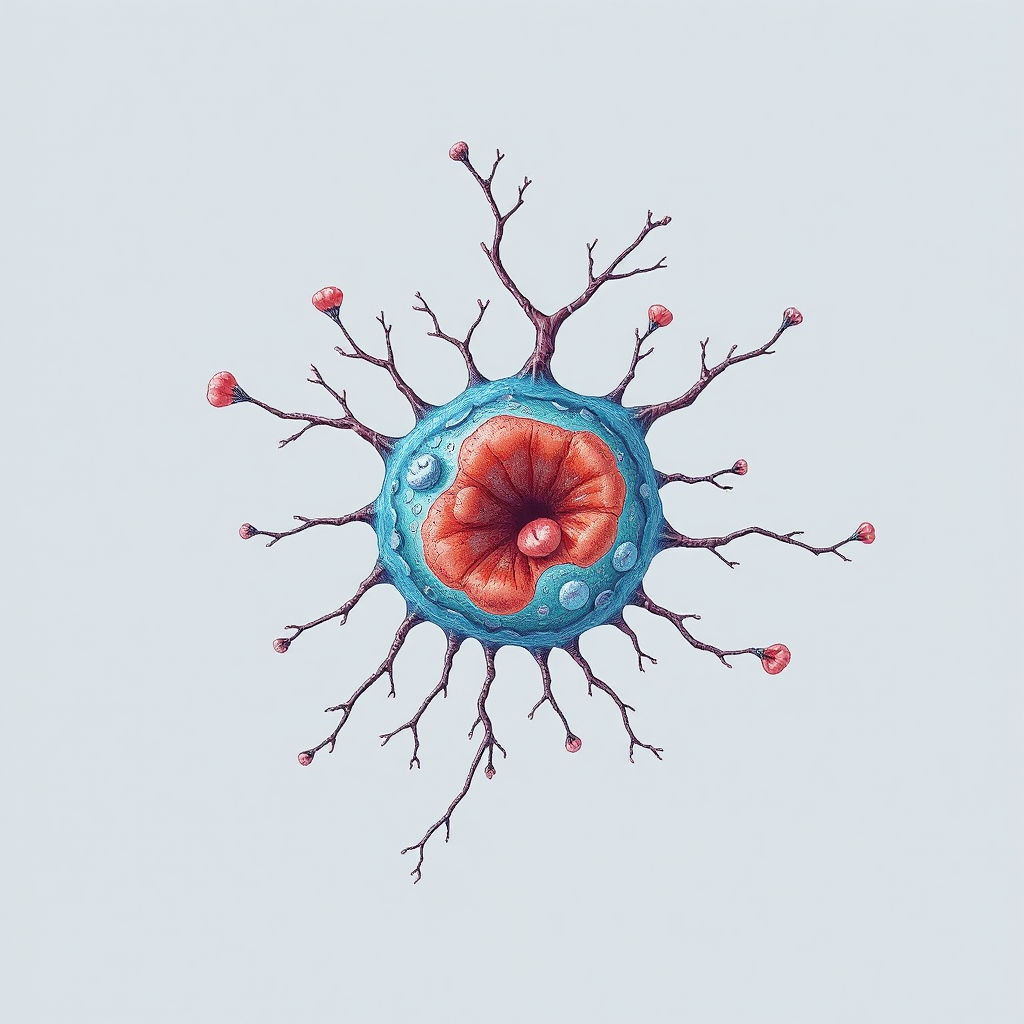What Are the Symptoms of Pheochromocytoma

Pheochromocytoma is a rare tumor that develops in the adrenal glands, causing your body to produce excessive hormones. These hormones can lead to symptoms like high blood pressure, rapid heartbeat, and severe headaches. This condition is uncommon, affecting only 2 to 8 people per million annually. It accounts for about 0.05–0.2% of hypertension cases. Symptoms often appear suddenly and may be triggered by physical exertion, stress, or even certain foods like chocolate or aged cheese. Recognizing these signs early can help you seek timely medical care.
Key Takeaways
Pheochromocytoma can cause high blood pressure, fast heartbeat, and bad headaches. Spotting these signs early is important to get help.
Staying away from foods like aged cheese and chocolate can lower symptom chances. Relaxing with meditation can also help control symptoms.
If you have ongoing headaches or a racing heart, see a doctor quickly. Finding it early can stop serious problems.
Regular check-ups after treatment are needed to watch for it coming back. Surgery to remove the tumor often fixes symptoms and balances hormones.
Knowing what causes and triggers pheochromocytoma helps you stay healthy and feel better.
Common Symptoms of Pheochromocytoma

Cardiovascular Symptoms
High blood pressure (hypertension)
High blood pressure is the most common symptom of pheochromocytoma. Over 60% of individuals with this condition experience hypertension, which can either be persistent or occur in sudden episodes. These episodes often feel intense and may include chest pain. The elevated blood pressure results from the excessive release of catecholamines, hormones that prepare your body for a "fight or flight" response. If left unmanaged, this can lead to serious complications like heart attack or stroke.
Rapid or irregular heartbeat (palpitations)
You may notice a racing or irregular heartbeat, often described as forceful palpitations. This symptom occurs due to the surge of adrenaline caused by the tumor. It can feel alarming, especially when accompanied by other signs like sweating, tremors, or pale skin. In some cases, these episodes may mimic a panic attack, leaving you feeling anxious or short of breath.
Neurological Symptoms
Severe headaches
Severe headaches are another hallmark symptom, affecting up to 90% of individuals with pheochromocytoma. These headaches often occur suddenly and may coincide with other symptoms like high blood pressure or palpitations. The intensity can disrupt your daily activities, making it difficult to focus or complete tasks.
Anxiety or panic attacks
The excessive release of catecholamines can also trigger anxiety or panic attacks. Unlike typical anxiety disorders, these episodes often include physical symptoms like high blood pressure, pale skin, and nervous shaking. You might feel an overwhelming sense of fear or doom, which can be distressing and confusing.
Note: If you experience these symptoms alongside others like palpitations or headaches, it’s important to consult a healthcare provider.
Other Physical Symptoms
Excessive sweating
Heavy sweating is a common physical symptom of pheochromocytoma. It often occurs during symptomatic episodes and can leave you feeling clammy or uncomfortable. This symptom is linked to the body's heightened stress response.
Unexplained weight loss
You might notice unexplained weight loss, which can result from the tumor's impact on your metabolism. This symptom often accompanies other issues like nausea, weakness, or gastrointestinal upset.
Pale skin or flushing
Changes in skin color, such as pallor or flushing, are also frequent. These changes occur due to the rapid shifts in blood flow caused by the tumor's hormonal effects. You may notice your skin turning pale during an episode or flushing afterward.
Less Common Symptoms of Pheochromocytoma
While the common symptoms of pheochromocytoma are well-known, less frequent signs can also occur. These symptoms may affect your digestive system, breathing, or overall energy levels, making them harder to connect to the condition. Recognizing these signs can help you better understand your health and seek appropriate care.
Digestive Symptoms
Nausea or vomiting
You might experience nausea or vomiting, which are less common but notable symptoms of pheochromocytoma. These issues arise because the tumor disrupts normal gastrointestinal function by releasing excessive catecholamines. This hormonal imbalance can interfere with digestion, leaving you feeling queasy or causing you to vomit unexpectedly.
Abdominal pain
Abdominal pain is another digestive symptom that some individuals report. This discomfort may feel sharp or persistent, often occurring alongside other symptoms like nausea. The pain stems from the tumor's impact on your metabolism and the surrounding organs, which can lead to bloating or cramping sensations.
Respiratory Symptoms
Shortness of breath
Shortness of breath can occur during symptomatic episodes. You may feel like you cannot catch your breath, which can be alarming. This symptom often mimics a panic attack, with sudden difficulty breathing and a sense of fear or doom. The hormonal surges caused by pheochromocytoma can trigger these episodes, making it essential to monitor your breathing patterns.
General Symptoms
Fatigue or weakness
Fatigue and weakness are common complaints among those with pheochromocytoma. You might feel unusually tired, even after resting. This overwhelming exhaustion often follows symptomatic episodes, leaving you drained and unable to perform daily tasks.
Sensitivity to heat or cold
Sensitivity to temperature changes is another general symptom. You may notice that you feel unusually hot or cold compared to others around you. This sensitivity results from the tumor's effect on your body's ability to regulate temperature, which can make you uncomfortable in normal environments.
Tip: If you notice these less common symptoms, especially alongside more typical signs like high blood pressure or headaches, consult a healthcare provider. Early diagnosis can prevent complications and improve your quality of life.
Symptomatic Spells and Triggers
Nature of Symptomatic Episodes
Sudden onset of symptoms
Pheochromocytoma symptoms often appear suddenly, catching you off guard. These episodes can feel intense, with symptoms like a racing heartbeat, severe headaches, or excessive sweating. The sudden surge of hormones from the tumor triggers these episodes, creating a "fight or flight" response in your body.
Duration of episodes (minutes to hours)
The duration of these episodes varies widely. Some may last only a few seconds, while others can persist for several hours. The frequency also differs from person to person. You might experience episodes several times a day or as rarely as once every few months. The table below summarizes these variations:
Duration of Episodes | Frequency of Episodes |
|---|---|
Several times a day to once every few months |
Factors like tumor size and hormone production levels influence the severity and frequency of these episodes. Some tumors may not produce enough hormones to cause symptoms, while others lead to frequent, intense attacks.
Common Triggers
Physical exertion or exercise
Strenuous activities, such as heavy lifting or intense workouts, can trigger symptomatic episodes. These activities increase your body's demand for energy, which may exacerbate the tumor's hormonal effects. Opting for gentle exercises like walking or yoga can help you stay active without provoking symptoms.
Emotional stress or anxiety
Stressful situations or heightened emotions often act as triggers. When you feel anxious or overwhelmed, your body releases stress hormones, which can amplify the effects of the tumor. Practicing stress management techniques, such as meditation or deep breathing, can reduce the likelihood of episodes.
Certain foods (e.g., high in tyramine)
Foods rich in tyramine, such as aged cheeses, smoked meats, and chocolate, can provoke symptoms. Tyramine affects blood pressure, which can worsen your condition. Avoiding these foods helps minimize episodes. Common tyramine-rich foods include:
Some cheeses
Smoked or dried meats
Chocolate
Certain beers and wines
Soy products
Medications or stimulants
Certain medications, including tricyclic antidepressants, MAOIs, and stimulants, may trigger episodes. These drugs interact with the tumor's hormonal activity, leading to sudden symptoms. If you take any of these medications, consult your healthcare provider to explore safer alternatives.
Tip: Managing triggers effectively can improve your quality of life. Avoid tyramine-rich foods, engage in light physical activity, and practice relaxation techniques to reduce the frequency of symptomatic episodes.
Complications of Untreated Pheochromocytoma

Untreated pheochromocytoma can lead to severe health complications. The excessive release of hormones from the tumor affects multiple systems in your body, increasing the risk of life-threatening conditions.
Cardiovascular Risks
Persistent high blood pressure
High blood pressure is the most common complication of untreated pheochromocytoma, affecting nearly 90% of patients. This condition can become chronic, putting immense strain on your heart and blood vessels. Over time, persistent hypertension increases the likelihood of developing cardiovascular diseases, such as congestive heart failure or arrhythmias like atrial fibrillation.
Risk of heart attack or stroke
The hormonal surges caused by pheochromocytoma can trigger a crisis, releasing large amounts of adrenaline into your bloodstream. This sudden spike in stress hormones can lead to a heart attack or stroke. These events are life-threatening and require immediate medical attention. Without treatment, the tumor's impact on blood pressure regulation makes these risks even more pronounced.
Note: Pheochromocytomas are considered one of the highest-risk tumors due to their potential to cause fatal cardiovascular events.
Organ Damage
Kidney damage
Chronic high blood pressure can harm your kidneys. Over time, the increased pressure damages the delicate blood vessels in your kidneys, reducing their ability to filter waste effectively. This can lead to kidney disease or even kidney failure if left untreated.
Damage to blood vessels
The constant strain from elevated blood pressure weakens your blood vessels. This damage can result in aneurysms or other vascular complications. Weakened blood vessels are more prone to rupture, which can cause internal bleeding and other serious health issues.
Life-Threatening Crises
Adrenal crisis
An adrenal crisis occurs when your body cannot produce enough hormones to meet its needs. In the case of pheochromocytoma, this can happen suddenly during a symptomatic episode. Symptoms include severe fatigue, low blood pressure, and shock. Without prompt treatment, an adrenal crisis can be fatal.
Severe hypertensive episodes
Hypertensive episodes caused by pheochromocytoma can escalate quickly. These episodes involve dangerously high blood pressure levels, which can last for minutes or hours. They often lead to complications like heart failure, stroke, or organ damage. Managing these episodes requires immediate medical intervention to prevent long-term harm.
Tip: Early diagnosis and treatment of pheochromocytoma can significantly reduce the risk of these complications. If you experience persistent symptoms, consult a healthcare provider promptly.
When to Seek Medical Attention for Pheochromocytoma
Recognizing Warning Signs
Persistent or severe symptoms
Certain symptoms of pheochromocytoma demand immediate medical attention. These include high blood pressure, rapid heart rate, severe headaches, and excessive sweating. You might also notice pale skin, flushing, or blurred vision during symptomatic episodes. If these symptoms persist or occur frequently, they could indicate an underlying issue. Other warning signs include unexplained weight loss, abdominal pain, or psychiatric disturbances like anxiety or panic attacks.
Tip: Seek medical care if your blood pressure remains difficult to control despite treatment or if symptoms worsen after eating specific foods, such as aged cheese or chocolate, or taking medications like MAO inhibitors.
Symptoms that worsen over time
Symptoms of pheochromocytoma often intensify if left untreated. You may experience more frequent episodes, with symptoms lasting longer or becoming more severe. For example, high blood pressure may require multiple medications to manage, or you might develop additional issues like constipation or high blood sugar levels. If you have a family history of pheochromocytoma or related genetic disorders, such as MEN II or von Hippel-Lindau disease, you should remain vigilant and consult a healthcare provider at the first sign of symptoms.
Importance of Early Diagnosis
Preventing complications
Early diagnosis of pheochromocytoma can prevent life-threatening complications. Untreated, the condition may lead to persistent high blood pressure, heart failure, or arrhythmias. Severe hypertensive episodes can also increase the risk of stroke or kidney damage. Early detection allows for timely intervention, reducing the likelihood of these outcomes.
Note: Blood and urine tests, imaging scans, and genetic testing are effective tools for diagnosing pheochromocytoma. A 24-hour urine collection, which measures catecholamine levels, is particularly reliable.
Improving treatment outcomes
Identifying pheochromocytoma early improves your chances of successful treatment. In most cases, surgical removal of the tumor resolves symptoms and restores normal hormone levels. Proper management of blood pressure before surgery, often through alpha1-adrenergic antagonist therapy, minimizes the risk of hypertensive crises during the procedure. Early intervention not only enhances recovery but also prevents the condition from becoming fatal.
Callout: If you experience symptoms like high blood pressure before age 35 or after age 60, consult a healthcare provider. Early evaluation can make a significant difference in your treatment outcomes.
Pheochromocytoma symptoms, such as high blood pressure, severe headaches, and palpitations, can disrupt your daily life. Recognizing these signs early helps you avoid complications like heart attack or stroke. Managing triggers is equally important. Avoid tyramine-rich foods, practice stress management techniques like meditation, and choose light exercises such as yoga. Medications, including alpha-blockers, can regulate blood pressure effectively. Educating yourself about these symptoms empowers you to seek timely medical care, improving your treatment outcomes and overall health.
Tip: If you notice persistent symptoms, consult a healthcare provider without delay.
FAQ
1. What tests diagnose pheochromocytoma?
Doctors use blood and urine tests to measure catecholamine levels. Imaging scans like CT or MRI help locate the tumor. A 24-hour urine collection is often recommended for accurate results. Genetic testing may also be suggested if you have a family history of related conditions.
2. Can pheochromocytoma be cured?
Yes, surgical removal of the tumor often cures pheochromocytoma. In most cases, symptoms resolve after surgery. However, regular follow-ups are essential to monitor for recurrence or complications. Early diagnosis improves the chances of a full recovery.
3. What foods should you avoid with pheochromocytoma?
Avoid foods high in tyramine, such as aged cheese, smoked meats, and fermented products. These can trigger symptoms like high blood pressure. Limiting caffeine and alcohol also helps reduce the risk of symptomatic episodes.
Tip: Always check food labels for hidden sources of tyramine.
4. Is pheochromocytoma hereditary?
Yes, pheochromocytoma can run in families. Genetic conditions like MEN II or von Hippel-Lindau syndrome increase your risk. If you have a family history, consider genetic counseling and regular screenings to detect the condition early.
5. What happens if pheochromocytoma is left untreated?
Untreated pheochromocytoma can lead to severe complications like persistent high blood pressure, heart attack, or stroke. It may also cause organ damage, including kidney failure. Early treatment prevents these life-threatening outcomes and improves your quality of life.
Note: If you suspect symptoms, consult a healthcare provider immediately.
See Also
Identifying Key Signs of Hypopharyngeal Cancer Symptoms
Recognizing the Warning Signs of Kidney Cancer
Essential Information on Adrenocortical Carcinoma Symptoms
